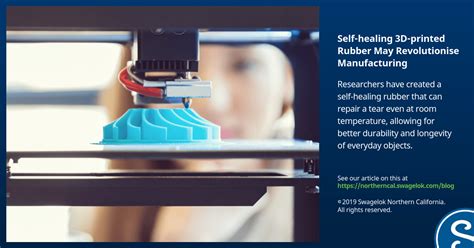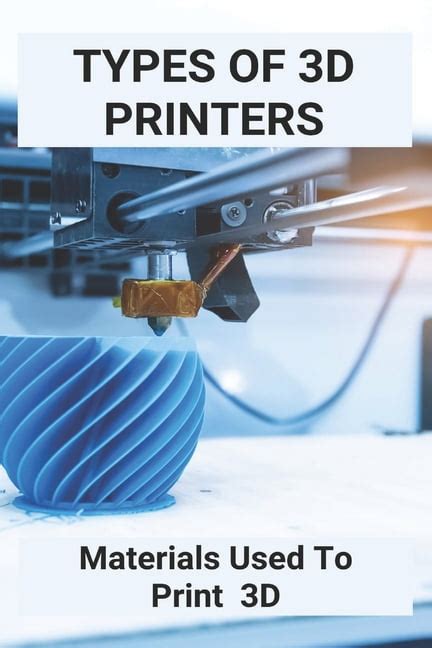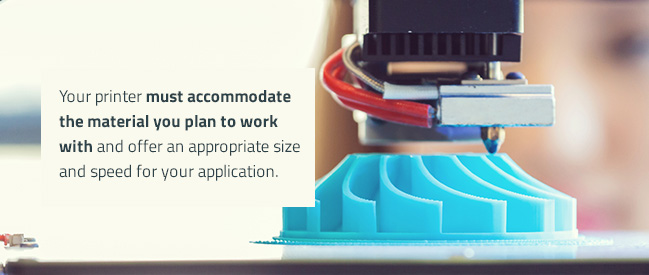Carbon fiber nylon filament has emerged as a game-changer in the world of 3D printing, offering an impressive combination of strength, durability, and lightweight properties. This advanced material is not only revolutionizing the aerospace and automotive industries but also proving its versatility in various other applications. As more 3D printing enthusiasts and professionals seek out innovative solutions, carbon fiber nylon filament stands out for its ability to create complex shapes and structures with precision. This article explores the top benefits and uses of carbon fiber nylon filament, highlighting its cost-effectiveness, compatibility with different 3D printers, and its potential role in sustainable manufacturing.
Explore this topic thoroughly with zopmj.com
1. Introduction to Carbon Fiber Nylon Filament
Carbon fiber nylon filament is a cutting-edge material that blends the flexibility and toughness of nylon with the exceptional strength and rigidity of carbon fiber. This fusion results in a filament that is not only strong but also lightweight, making it ideal for a wide range of applications where durability and performance are critical.
Nylon, by itself, is well-regarded for its elasticity, impact resistance, and abrasion resistance, making it a popular choice for functional prototypes and end-use parts. However, when infused with carbon fiber, its mechanical properties are significantly enhanced, offering superior tensile strength and stiffness. This combination makes carbon fiber nylon filament particularly suitable for demanding industries such as aerospace, automotive, and engineering, where the need for high-performance materials is paramount.
In the 3D printing world, this filament allows for the creation of complex geometries that maintain their integrity under stress, which is crucial for producing functional components. Additionally, the filament’s ease of use with a variety of 3D printers, coupled with its ability to produce high-quality prints with minimal warping, has made it a popular choice among professionals and hobbyists alike. As the technology continues to evolve, carbon fiber nylon filament is poised to play a significant role in the future of additive manufacturing.

2. Strength and Durability: Enhanced Properties
Carbon fiber nylon filament is renowned for its exceptional strength and durability, making it a top choice for applications requiring materials that can withstand significant stress and strain. The infusion of carbon fiber into nylon creates a composite that combines the flexibility and impact resistance of nylon with the rigidity and tensile strength of carbon fiber. This results in a filament that is not only tough but also resilient under challenging conditions.
One of the key benefits of this enhanced strength is its ability to produce parts that can endure heavy loads and harsh environments, such as those found in the aerospace and automotive industries. Components made from carbon fiber nylon filament are less likely to warp, crack, or break, even when subjected to extreme temperatures or mechanical forces. This makes it an ideal material for creating functional prototypes, end-use parts, and tooling that require high performance and longevity. As a result, this filament has become a go-to choice for engineers and designers seeking reliable, durable 3D-printed solutions.

3. Lightweight Nature: Applications in Aerospace and Automotive Industries
The lightweight nature of carbon fiber nylon filament is one of its most significant advantages, particularly in industries where weight reduction is critical, such as aerospace and automotive. By combining the strength of carbon fiber with the flexibility of nylon, this filament achieves an impressive strength-to-weight ratio that is highly valued in applications where minimizing weight without compromising structural integrity is essential.
In the aerospace industry, reducing weight is a key factor in improving fuel efficiency and overall performance. Components made from carbon fiber nylon filament contribute to lighter aircraft structures, which can lead to significant cost savings and enhanced operational efficiency. These parts maintain their strength and durability while reducing the overall load, making them ideal for everything from interior components to structural elements.
Similarly, in the automotive industry, the demand for lightweight yet strong materials has driven the adoption of carbon fiber nylon filament. This material is used to produce parts such as brackets, housings, and even some body components, helping manufacturers meet stringent weight reduction goals. The use of this filament not only improves fuel efficiency but also enhances vehicle performance and safety. As a result, carbon fiber nylon filament is increasingly becoming a preferred material in the production of high-performance, lightweight

4. Versatility in Design: Complex Shapes and Structures
Carbon fiber nylon filament offers unparalleled versatility in design, making it a preferred material for creating complex shapes and intricate structures in 3D printing. The combination of nylon’s flexibility and carbon fiber’s rigidity allows for the production of parts with detailed geometries that would be challenging to achieve with traditional materials. This versatility is particularly beneficial for industries that require custom components with precise specifications, such as aerospace, automotive, and engineering.
The filament’s ability to maintain dimensional stability and structural integrity during the printing process ensures that even the most intricate designs are executed flawlessly. Engineers and designers can experiment with innovative designs, confident that the material will support the creation of durable and functional parts. Moreover, the filament’s excellent layer adhesion reduces the risk of delamination, allowing for smoother, more reliable prints. This capability opens up new possibilities for prototyping and manufacturing, enabling the production of complex, high-performance components that meet
5. Cost-Effectiveness: Long-Term Benefits
Carbon fiber nylon filament offers significant long-term cost-effectiveness, making it a valuable investment for both small-scale and large-scale 3D printing projects. While the initial cost of this filament may be higher compared to standard materials, its superior durability and performance result in long-term savings. Parts produced using carbon fiber nylon filament tend to last longer, reducing the need for frequent replacements and minimizing downtime in critical applications.
The filament’s strength and resilience also contribute to fewer printing errors, meaning less wasted material and time. This reliability is particularly important in industries like aerospace and automotive, where precision and consistency are essential. By reducing the likelihood of failed prints or subpar components, carbon fiber nylon filament helps streamline the manufacturing process, leading to more efficient production cycles.
Additionally, the versatility of this filament allows for the creation of complex parts in a single print, eliminating the need for multiple assembly steps. This not only saves on labor costs but also enhances the overall efficiency of the production process. As a result, the long-term benefits of using carbon fiber nylon filament, including reduced material waste, lower labor costs, and improved product longevity, make it a cost-effective choice for high-performance 3D printing applications.
6. Compatibility with 3D Printers: Recommended Models and Settings
Carbon fiber nylon filament is compatible with a variety of 3D printers, but achieving optimal results requires attention to specific printer models and settings. For best performance, 3D printers equipped with a hardened steel nozzle or a nozzle specifically designed for abrasive materials are recommended. The carbon fibers within the filament can wear out standard nozzles over time, so using a nozzle designed to handle these abrasives is crucial.
In terms of print settings, it is important to use a heated bed to ensure proper adhesion and minimize warping. A bed temperature of around 80-100°C is generally effective. The extrusion temperature for carbon fiber nylon filament typically ranges from 240-270°C, depending on the filament manufacturer’s specifications. It’s essential to follow the recommended temperature guidelines to achieve optimal layer adhesion and part strength.
Moreover, the filament’s unique properties can benefit from a slower printing speed, usually between 30-50 mm/s, to ensure that each layer adheres properly and the detailed design is accurately reproduced. Additionally, using an enclosure can help maintain a stable printing environment, reducing the risk of warping or delamination. By adhering to these recommendations, users can maximize the performance
7. Environmental Impact: Sustainability Considerations
Carbon fiber nylon filament, while offering numerous advantages in 3D printing, also raises important environmental considerations. The production of carbon fiber, which is used in this filament, involves energy-intensive processes that can contribute to higher carbon emissions. Additionally, the filament’s manufacturing and disposal must be carefully managed to minimize environmental impact.
However, there are efforts to address these concerns. Some manufacturers are exploring ways to produce carbon fiber more sustainably, including the use of recycled materials and reducing the energy required for production. Furthermore, advancements in recycling technologies are making it possible to reclaim and repurpose carbon fiber waste, reducing its overall environmental footprint.
Users can also contribute to sustainability by adopting best practices in material use and waste management. For example, optimizing print settings to reduce waste and ensuring proper disposal of unused filament can help mitigate the environmental impact. As the industry evolves, ongoing research and development in sustainable materials and practices will be crucial for balancing the benefits of carbon fiber nylon filament wi
8. Comparison with Other Filament Types: Performance and Usage
When compared to other filament types, carbon fiber nylon filament stands out for its exceptional strength, rigidity, and lightweight properties. Unlike standard nylon, which offers good flexibility and impact resistance, carbon fiber nylon combines these qualities with enhanced tensile strength and stiffness due to the addition of carbon fibers. This makes it superior in applications requiring high durability and load-bearing capabilities.
In contrast to filaments like PLA or ABS, which are more commonly used for general-purpose printing, carbon fiber nylon filament is specifically designed for high-performance parts. PLA is easy to print but lacks the strength needed for demanding applications, while ABS offers better strength but can be prone to warping. Carbon fiber nylon excels where both strength and precision are required, such as in aerospace and automotive components.
Additionally, while carbon fiber nylon filament may have a higher cost compared to PLA or ABS, its superior performance and durability often justify the investment for specialized applications. Its ability to create complex, high-strength parts makes it a valuable choice for advanced 3D printing projects.
9. Future Trends and Innovations
The future of carbon fiber nylon filament in 3D printing is poised for significant advancements and innovations. As research and development in materials science progress, new formulations of carbon fiber nylon are likely to emerge, offering even greater strength, flexibility, and ease of use. Innovations may include improved versions with enhanced thermal and chemical resistance, expanding the filament’s applicability to a broader range of industries and environments.
Additionally, sustainability will be a key focus, with efforts to develop more eco-friendly production methods and recycling processes for carbon fiber materials. This could involve the use of recycled carbon fibers or the development of bio-based nylon alternatives.
The integration of advanced 3D printing technologies, such as multi-material printing and automated quality control, will further enhance the capabilities and efficiency of carbon fiber nylon filament. As these trends unfold, the material is expected to play an increasingly vital role in producing high-performance, custom-engineered parts and components across various sectors, driving innovation and perfor
Carbon fiber nylon filament represents a significant advancement in 3D printing, offering unmatched strength, durability, and versatility. Its lightweight nature makes it ideal for high-performance applications in aerospace and automotive industries, while its ability to create complex designs enhances its value. Despite higher costs, its long-term benefits, including reduced material waste and increased part longevity, make it a worthwhile investment. As innovations continue, its ro
zopmj.com

